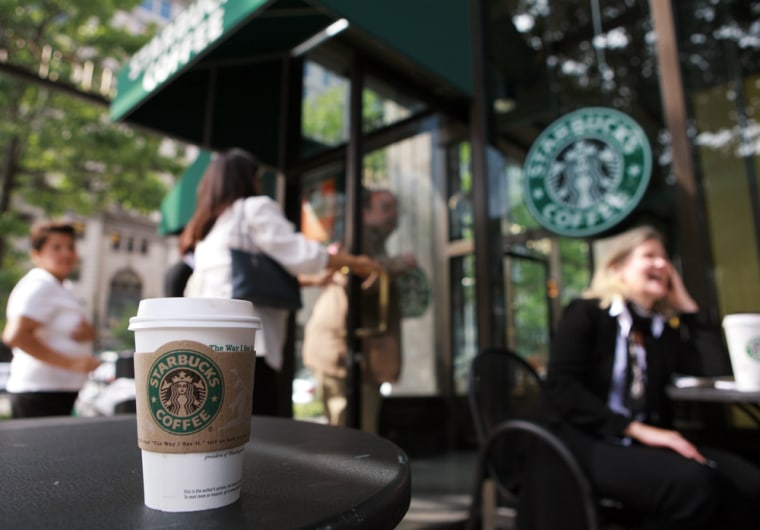Starbucks Corp. Thursday raised its forecast for how big it plans to get, upping it by a third to 40,000 stores, and said it was nowhere close to exhausting opportunities in North America, even as more possibilities appear internationally.
The world’s largest coffee shop chain said it is attracting more Hispanics, women and less affluent consumers to its U.S. stores and is focusing on China, India, Egypt, Brazil and Russia for international expansion.
The 40,000 stores -- a figure that would exceed the current size of McDonald’s Corp. -- are expected to be evenly split between the United States and international, the company announced at a biennial meeting with investors in Seattle.
Chief Executive Jim Donald did not give a specific time-frame for that target. The previous target of 30,000 coffee shops was also equally split between North America and international markets.
“We don’t believe that we are even 50 percent through to the unique opportunity we have in North America,” founder and Chairman Howard Schultz said during the meeting.
Starbucks currently has more than 12,000 stores, including 8,800 in the United States.
“We are extremely pleased with the development of our international business and see it as a huge opportunity, but as we sit here today, we have never been more enthused and more aggressive about the unique opportunities we have to expand the footprint in existing cities across America.”
Starbucks shares rose $2.73, or 7.6 percent, to close at $38.69 on Thursday after the company on Wednesday afternoon posted a 6 percent increase in same-store sales for September, topping analysts’ estimates. It was the stock’s highest closing price since May.
The increase in Starbucks’ long-term growth forecast was widely anticipated by Wall Street, and one investor attending the meeting said he was confident the chain had plenty of room to grow in its flagship U.S. market.
“I’ve been saying for years that I thought it would be a target of 40,000 to 50,000,” said Don Gher, chief investment officer of Bellevue, Washington-based Coldstream Capital Management.
“Just look at the statistics -- if you are in the state of Washington, there is one for every 11,000 people ... it shows that you can really travel the brand to a lot of areas other than urban locations.”
Investor concerns about oversaturation in the United States have long plagued Starbucks, which in recent months has seen slower growth in sales at stores open at least 13 months, a key retail measure known as same-store sales.
For the fiscal year 2006, which ended Oct. 1, same-store sales rose 7 percent, compared with increases of 8 percent and 11 percent in 2005 and 2004, respectively.
Starbucks expects China, where it has more than 400 stores, to one day be its biggest market outside the United States.
The company will open its first stores in Brazil and Egypt by the end of this year and hopes to enter India and Russia by the end of 2007.
To drive sales momentum at its U.S. stores, Starbucks in recent years has added lunch items such as salads and sandwiches and is offering hot breakfast sandwiches at coffee shops in a handful of U.S. cities.
It has also parlayed successful sales of music compilation CDs into a small but profitable entertainment business that has included deals for exclusive content with musicians such as Alanis Morissette and Bob Dylan.
As part of that strategy, the company on Thursday said it struck a deal to put “Starbucks Entertainment”-branded offerings on Apple Computer Inc.’s popular iTunes digital music store.
The company did not pay a fee to become a part of iTunes and will share in the profits from those sales, Chief Financial Officer Michael Casey said.
